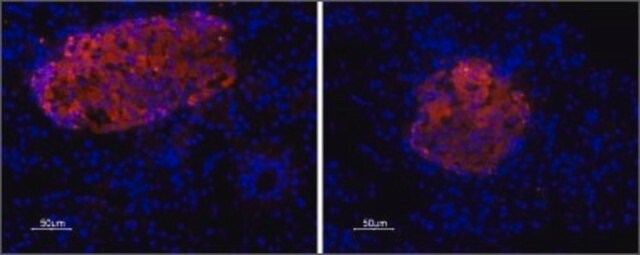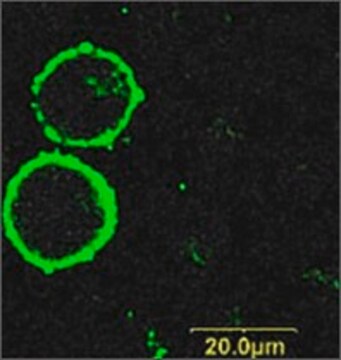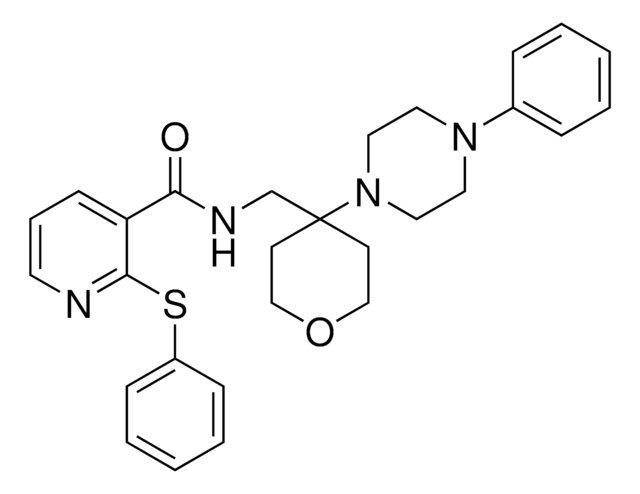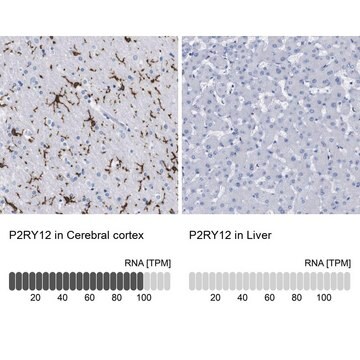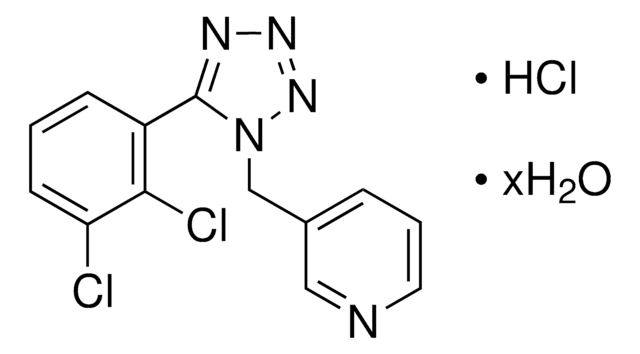P9122
Anti-Purinergic Receptor P2X7 (extracellular) antibody produced in rabbit
affinity isolated antibody, lyophilized powder
Synonym(s):
Anti-P2Z
Sign Into View Organizational & Contract Pricing
All Photos(2)
About This Item
Recommended Products
biological source
rabbit
Quality Level
conjugate
unconjugated
antibody form
affinity isolated antibody
antibody product type
primary antibodies
clone
polyclonal
form
lyophilized powder
species reactivity
human, rat, mouse
technique(s)
western blot: 1:200 using rat brain lysate and human cell lines
UniProt accession no.
shipped in
dry ice
storage temp.
−20°C
target post-translational modification
unmodified
Gene Information
human ... P2RX7(5027)
mouse ... P2rx7(18439)
rat ... P2rx7(29665)
General description
P2X receptors are membrane-bound ion channels that are activated by extracellular ATP. These receptors consist of seven known isoforms ranging from P2X1 to P2X7 . P2X7 modulates several cellular functions such as cell death, cytokine release and mRNA synthesis . Anti-Purinergic Receptor P2(X7) (extracellular) antibody is specific for P2X7 in rats and mice. The antibody also reacts with human K562 (Chronic myelogeneous leukemia); WEHI-231 (Lymphoma, B lymphocyte) and HL-60 (promyelocytic leukemia) cell lines.
Immunogen
Synthetic peptide corresponding to residues 136-152 of mouse P2X7 receptor. This antigenic epitope is identical in humans and rats; whereas in bovines, only 14/17 residues are identical.
Application
Anti-Purinergic Receptor P2(X7) (extracellular) antibody is suitable for use in immunoblot and western blot (1:200, using rat brain lysate and human cell lines).
Physical form
Lyophilized from phosphate buffered saline, pH 7.4, 1% BSA, and 0.05% sodium azide.
Disclaimer
Unless otherwise stated in our catalog or other company documentation accompanying the product(s), our products are intended for research use only and are not to be used for any other purpose, which includes but is not limited to, unauthorized commercial uses, in vitro diagnostic uses, ex vivo or in vivo therapeutic uses or any type of consumption or application to humans or animals.
Not finding the right product?
Try our Product Selector Tool.
Storage Class Code
11 - Combustible Solids
WGK
WGK 3
Flash Point(F)
Not applicable
Flash Point(C)
Not applicable
Choose from one of the most recent versions:
Already Own This Product?
Find documentation for the products that you have recently purchased in the Document Library.
Y Ding et al.
Journal of the autonomic nervous system, 81(1-3), 289-294 (2000-06-28)
A role for ATP in nociception and pain induction was proposed on the basis of human psychophysical experiments shortly after the formulation of the purinergic hypothesis. Following the pharmacological definition of distinct P2X and P2Y purinergic receptor subtypes by Burnstock
Molecular Physiology of P2X Receptors.
North, R., A.
Physical Review, 82(4), 1013-1067 (2002)
A Faroni et al.
Journal of neuroscience research, 92(10), 1259-1269 (2014-06-07)
Adenosine-5'-triphosphate, the physiological ligand of P2X receptors, is an important factor in peripheral nerve development. P2X7 receptor is expressed in Schwann cells (SCs), but the specific effects of P2X7 purinergic signaling on peripheral nerve development, myelination, and function are largely
Georg Ebeling et al.
PloS one, 9(6), e100282-e100282 (2014-06-19)
P2X7 receptors, ATP-gated cation channels, are specifically expressed in alveolar epithelial cells. The pathophysiological function of this lung cell type, except a recently reported putative involvement in surfactant secretion, is unknown. In addition, P2X7 receptor-deficient mice show reduced inflammation and
Our team of scientists has experience in all areas of research including Life Science, Material Science, Chemical Synthesis, Chromatography, Analytical and many others.
Contact Technical Service